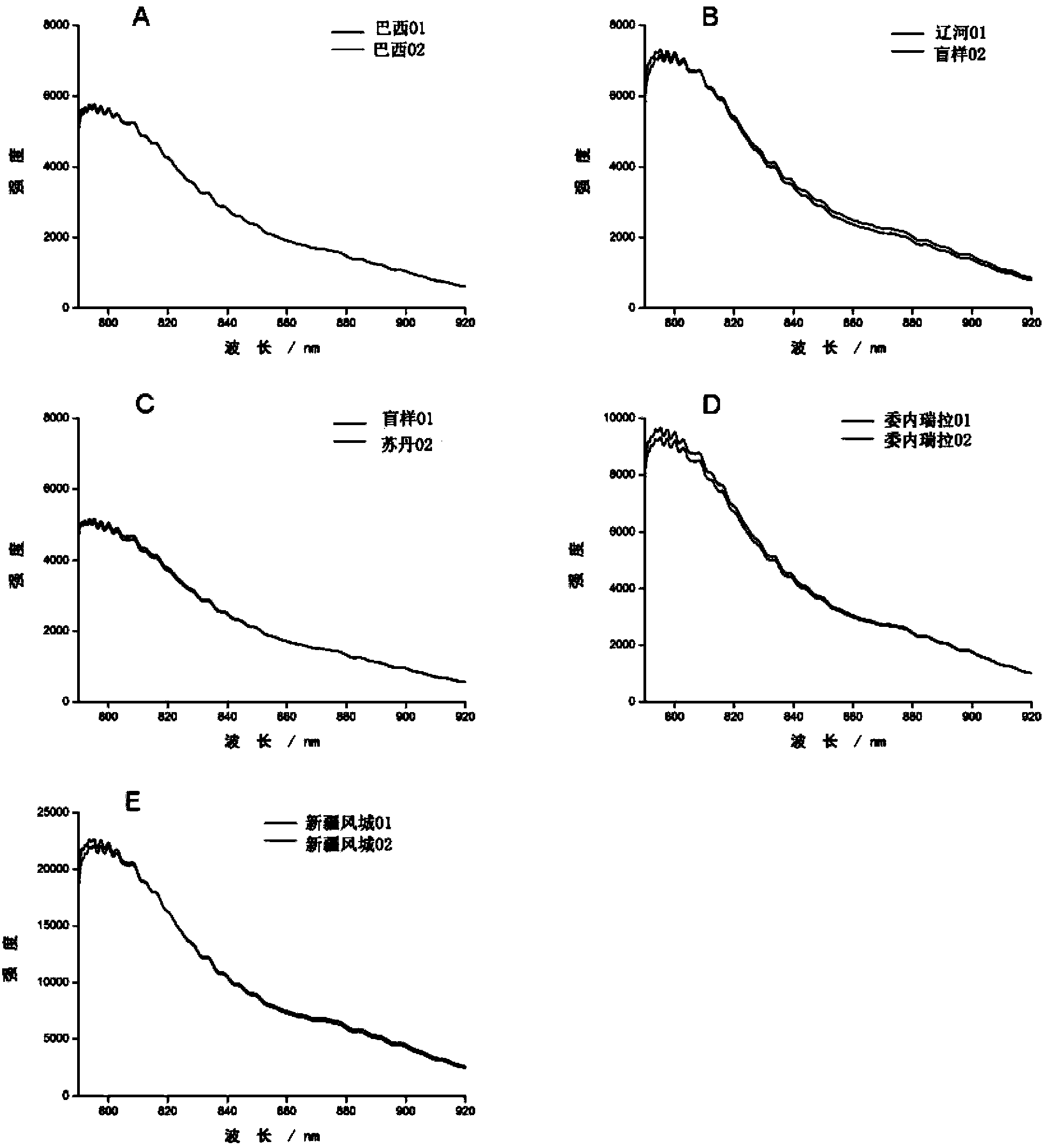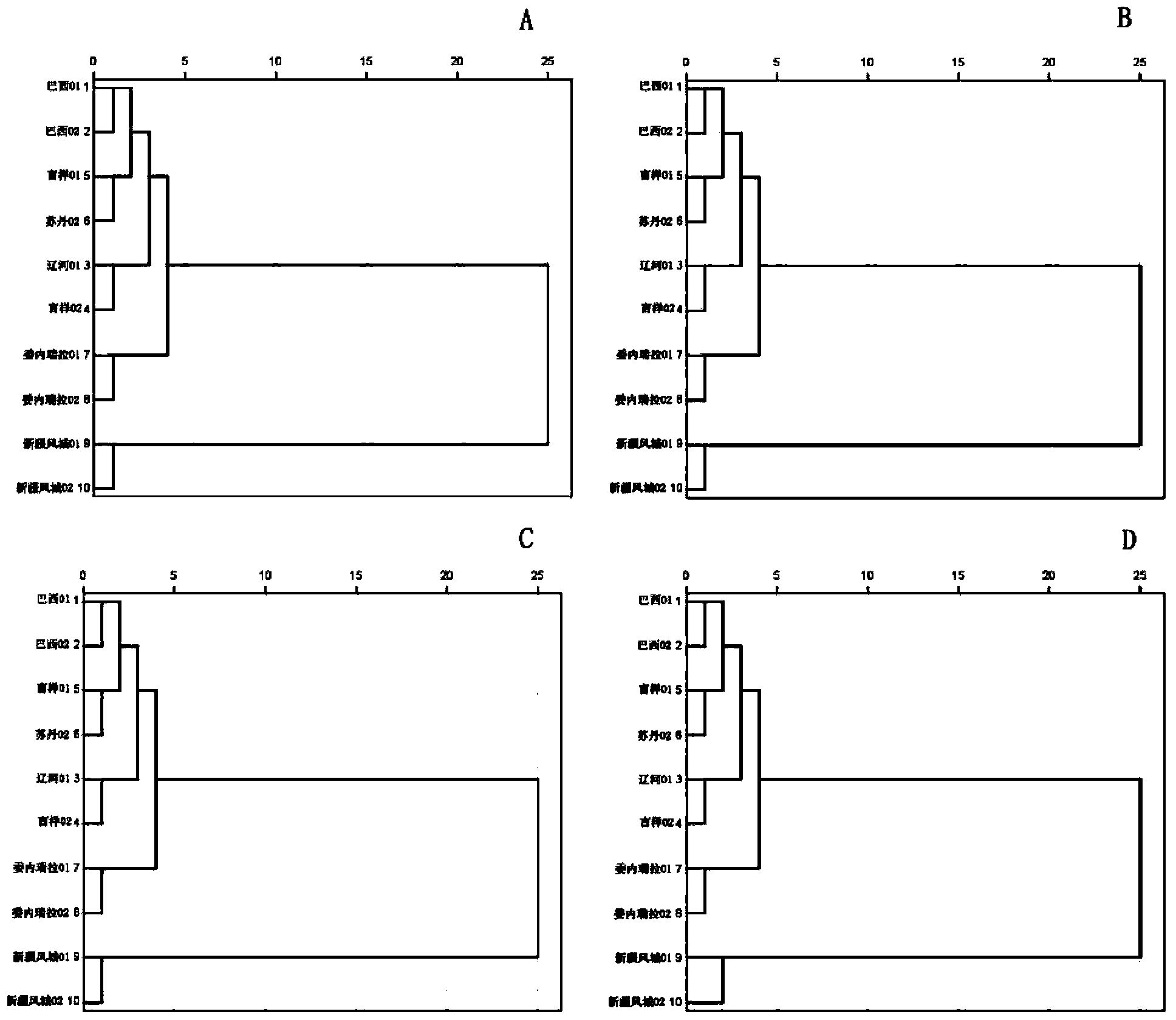Crude oil identification method based on microscopic confocal Raman spectrum
A technology of crude oil and spectroscopy, applied in Raman scattering, material excitation analysis, etc., can solve the problems of data authenticity discount, achieve the effect of enhancing accuracy and persuasiveness, enriching fingerprint information, and avoiding errors and uncertainties
- Summary
- Abstract
- Description
- Claims
- Application Information
AI Technical Summary
Problems solved by technology
Method used
Image
Examples
Embodiment 1
[0056] The crude oil samples used in this example were provided by the State Key Laboratory of Heavy Oil, China University of Petroleum (Beijing), and were respectively from Brazil, Liaohe, Sudan, Venezuela and Fengcheng, Xinjiang. Before using the Raman spectrometer for detection, first use high-purity quartz glass slides and coverslips to prepare crude oil samples.
[0057] 1. Crude oil fingerprint collection: use Horiba JY XploRA micro confocal Raman spectrometer, aperture 100μm, slit 50μm, grating 1200cm -1 , room temperature 23°C, CCD detector temperature -70°C.
[0058] ①Collect fingerprint data with prominent Raman features but weak fluorescence features: two parallel samples were taken for each crude oil, numbered respectively: Brazil 01, 02, Liaohe 01, 02, etc., among which Sudan 01 was used as blind sample 01, and Liaohe 02 was used as blind sample 01. For blind sample 02, a verification test was performed during cluster analysis.
[0059] Detection parameters: set...
PUM
 Login to View More
Login to View More Abstract
Description
Claims
Application Information
 Login to View More
Login to View More - R&D
- Intellectual Property
- Life Sciences
- Materials
- Tech Scout
- Unparalleled Data Quality
- Higher Quality Content
- 60% Fewer Hallucinations
Browse by: Latest US Patents, China's latest patents, Technical Efficacy Thesaurus, Application Domain, Technology Topic, Popular Technical Reports.
© 2025 PatSnap. All rights reserved.Legal|Privacy policy|Modern Slavery Act Transparency Statement|Sitemap|About US| Contact US: help@patsnap.com



